Eero 6 Plus vs. Eero Pro 6E: Compare Amazon's Mesh Wi-Fi Systems
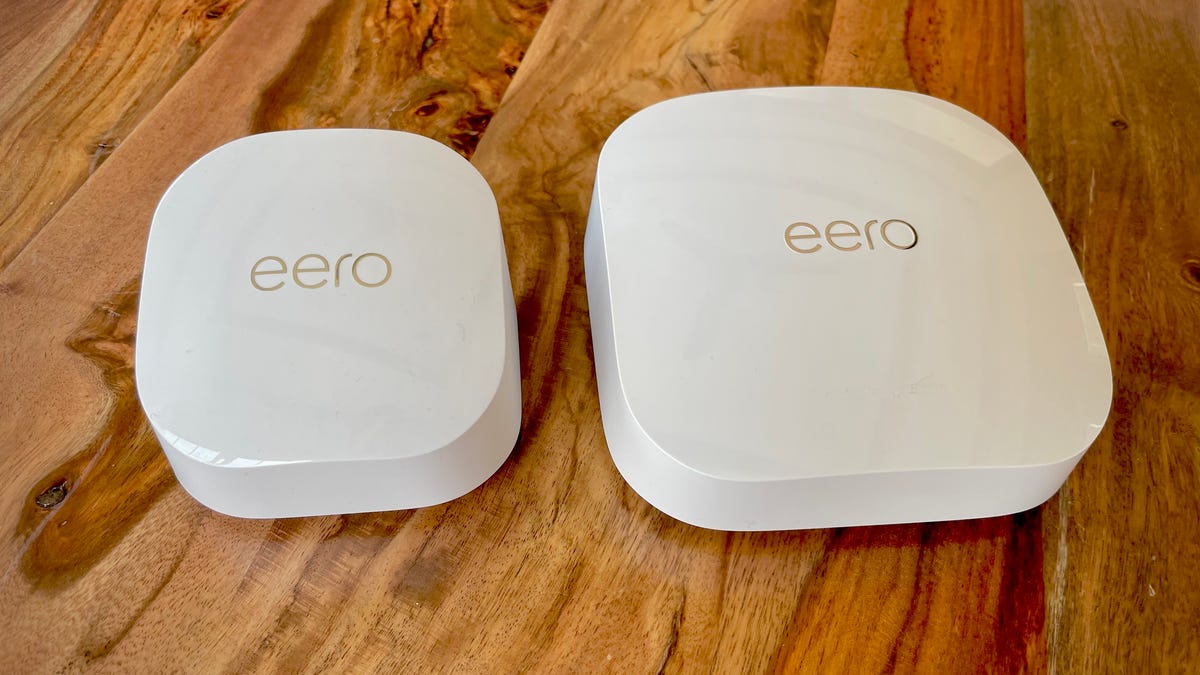
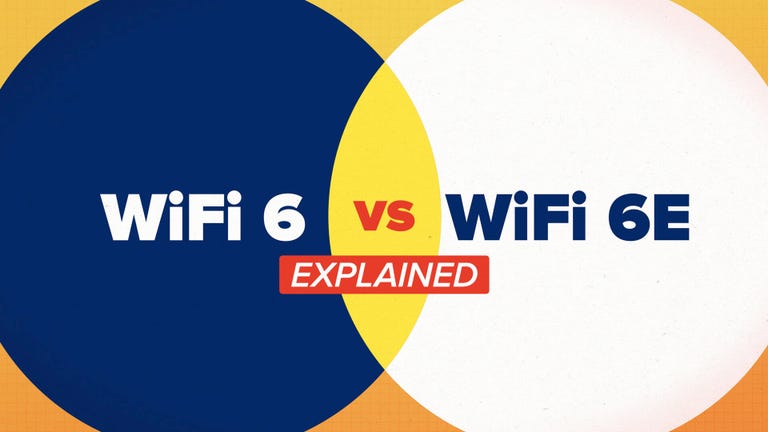
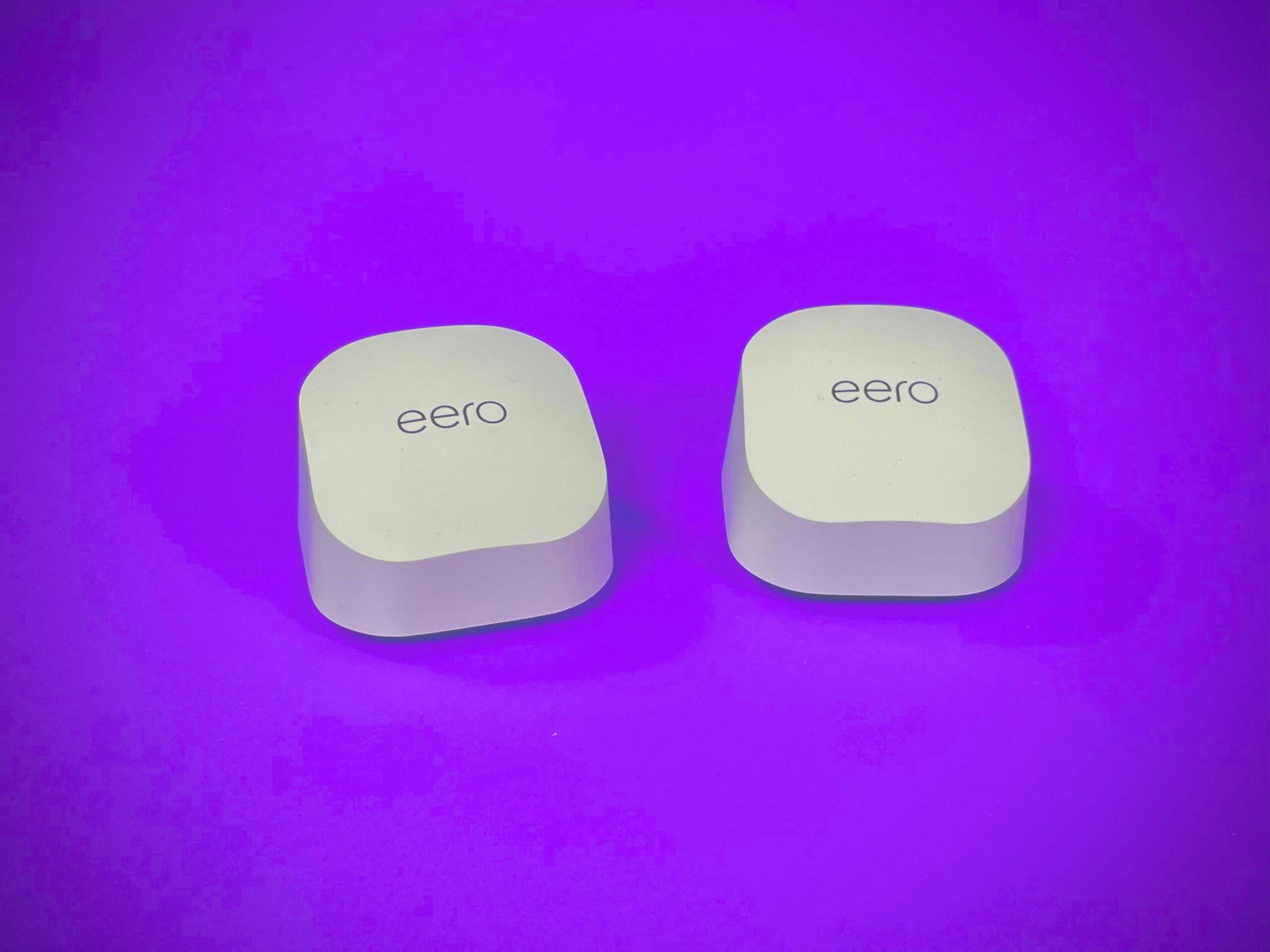
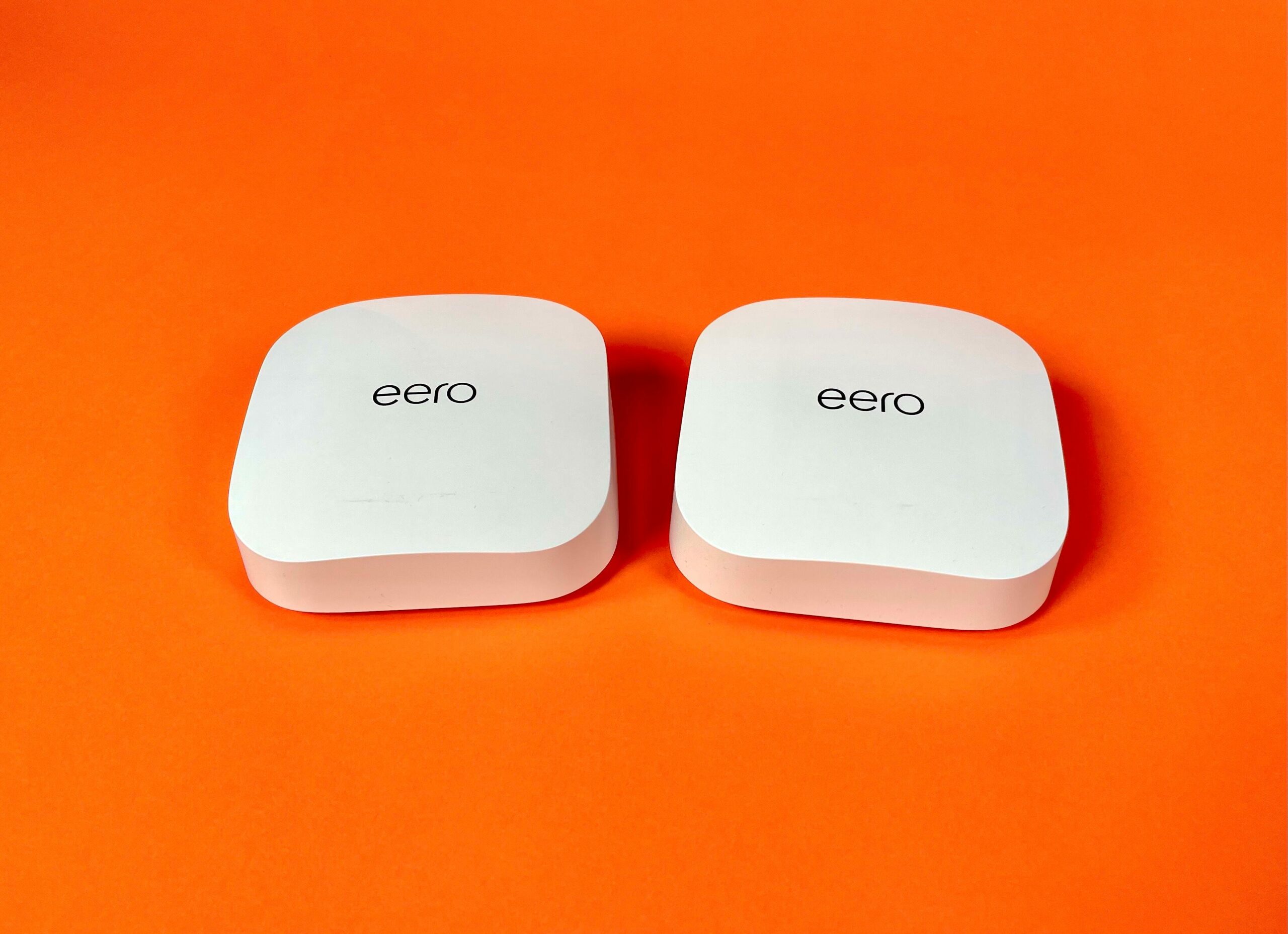
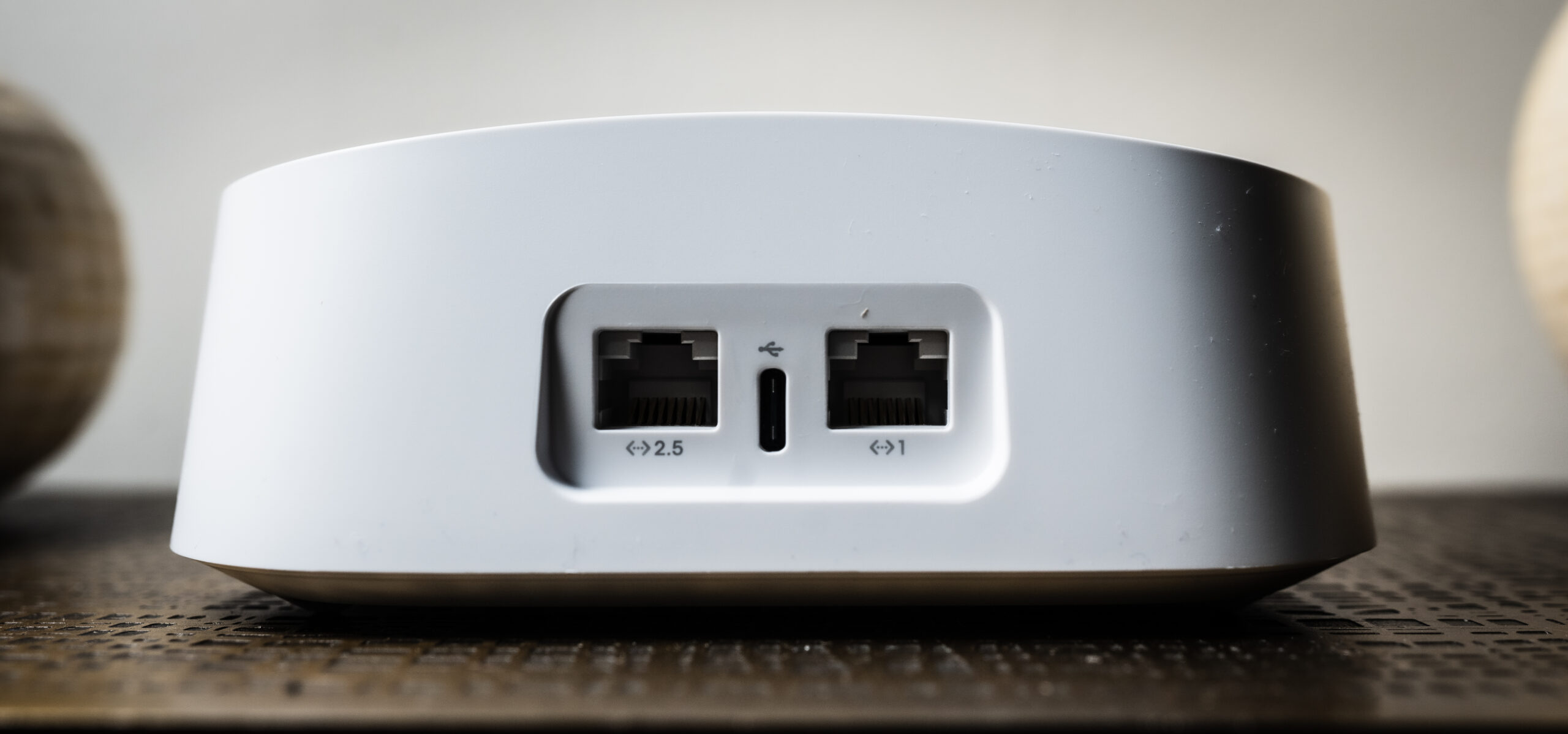
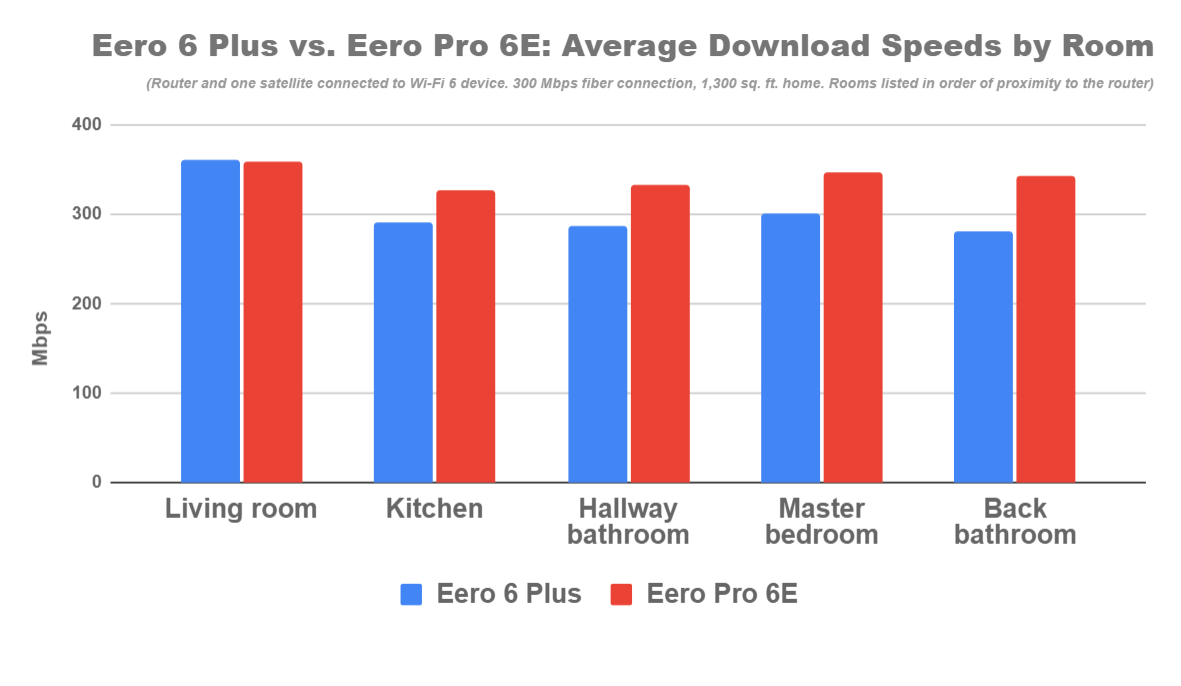
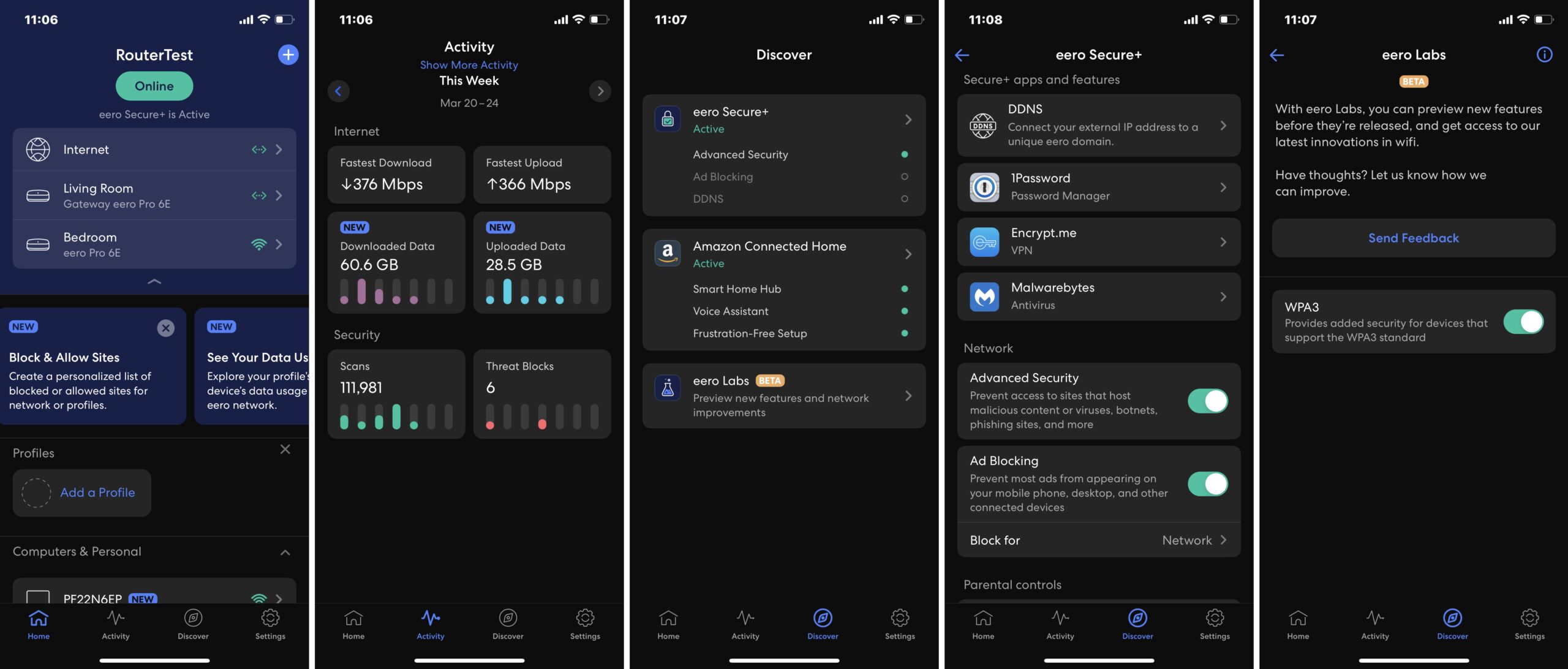
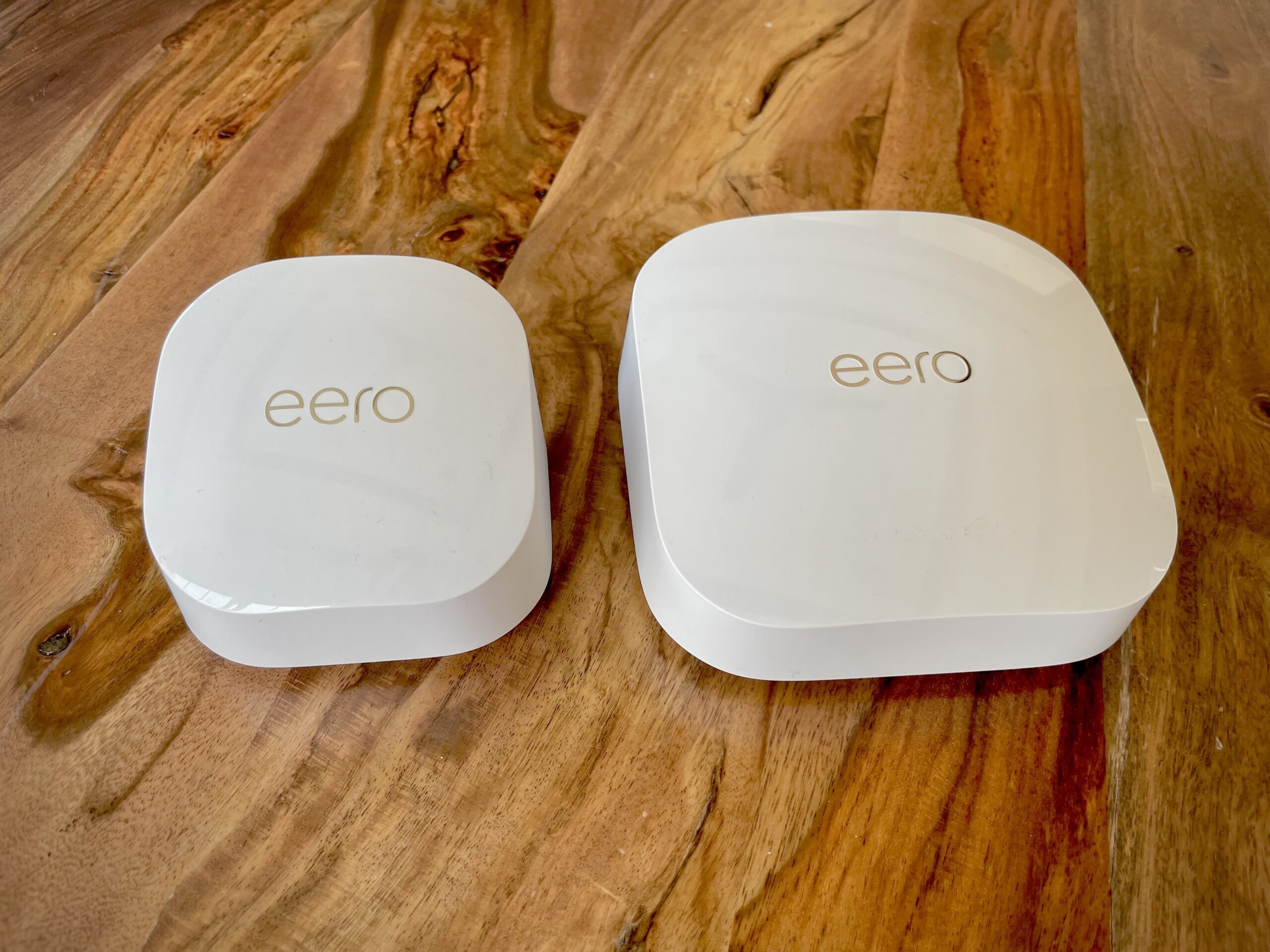
The Amazon-owned lineup of Eero mesh routers has been excelling in our testing for several years, and the Eero 6 Plus ($195 for a three-pack) and the Eero Pro 6E ($350 for a three-pack) are two of its most popular options. Both have also come down considerably in price since Amazon debuted the Wi-Fi 7 compatible Eero Max 7 ($450 for a three-pack) earlier this year.
With multiple devices spread throughout your house, each of the Eero systems promises to create a faster, more reliable connection from room to room. Both systems feature full support for Wi-Fi 6 speeds as well as built-in Zigbee radios that let you connect lights, locks and other smart home gadgets to your network without the need for an extra hub.

Watch this: Wi-Fi 6 vs. Wi-FI 6E: Here’s the difference in three minutes
Look under the hood, however, and you’ll find lots separating these two models — particularly when it comes to performance. Like the “Pro” part of the branding suggests, the Eero Pro 6E kicks things up with an ultra-high-speed WAN port capable of supporting incoming Ethernet speeds as high as 2.5Gbps. It also supports Wi-Fi 6E, which lets it connect compatible devices over the recently opened ultrawide 6GHz band.
If you’re trying to decide which one would be a better fit for your home, you’ve come to the right place. I spent a few weeks testing the two systems out, and have plenty to share about their respective capabilities. Here’s a close look at how the two systems stack up against each other, compare to previous Eero systems and match up to the competition. I’ll also include my thoughts on which might be the better buy for most peoples’ home networking needs. (Hint: One of them has already earned a spot on my list of the best mesh routers currently on sale.)
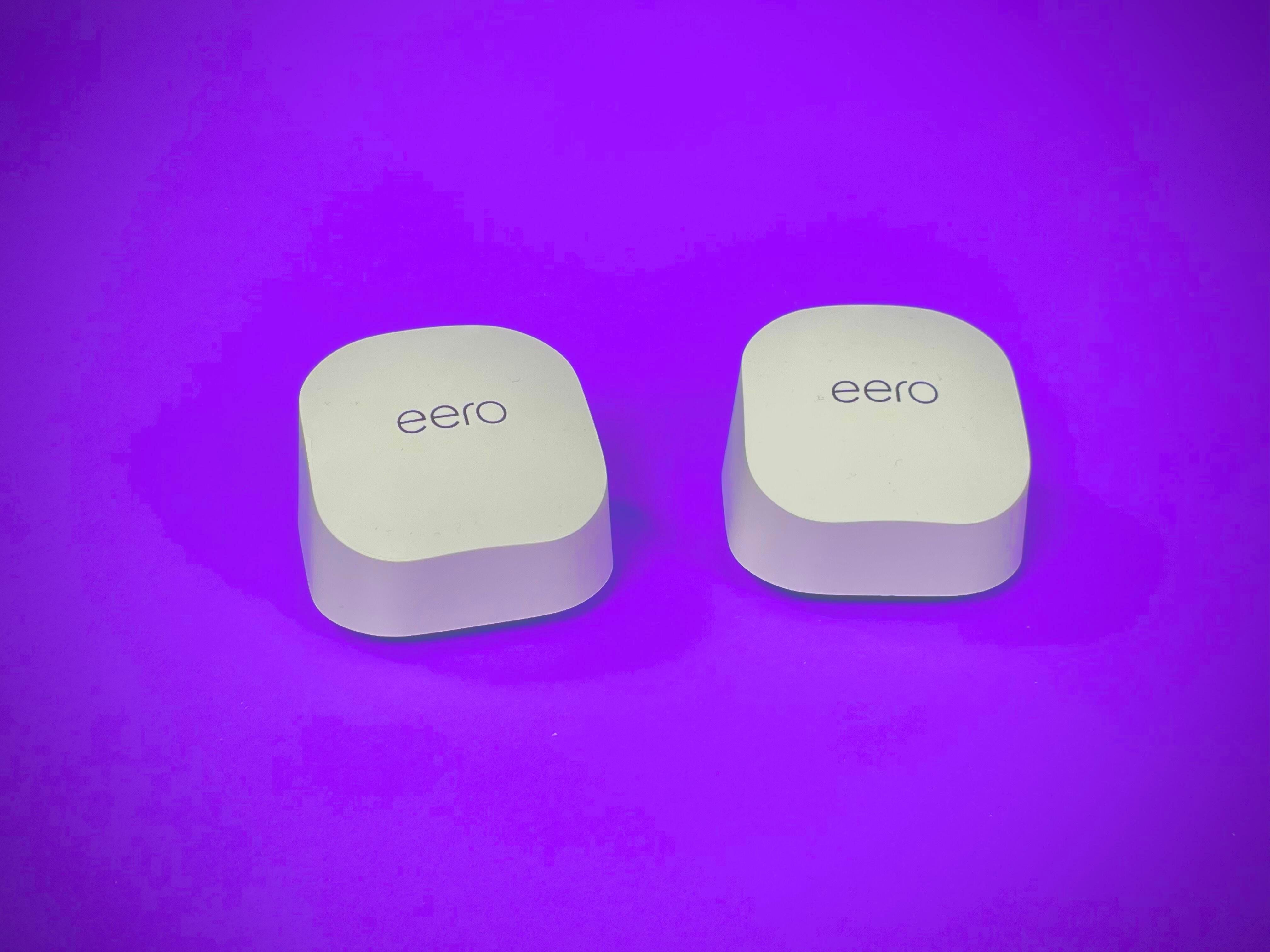
Eero 6 Plus
Amazon’s second swing at Wi-Fi 6
Speed rating: AX3000
Design: Dualband (2.4 and 5GHz)
Ports: Two 1Gbps Ethernet jacks, USB-C power jack
Extras: Built-in Zigbee smart home radio, Matter support via Thread
Hardware: 1GHz dual-core processor, 512MB of RAM, 4GB of Flash storage
Range: 4,500 sq. ft. (three-pack)
Individual price: $139
Three-pack price: $299
In 2020, a little over a year after being acquired by Amazon, Eero introduced its first mesh router for the Wi-Fi 6 age, the Eero 6. At $279 for a three-piece system, the price was tempting — but the inconsistent performance in our speed tests left a lot to be desired.
Flash ahead to 2022, and the introduction of the Eero 6 Plus. Priced slightly higher this time around at $195 for a three-pack, the system looks nearly identical to the one that preceded it, but it promises upgraded performance by way of new support for 160MHz channels (up from 80MHz). A faster AX3000 speed rating (up from AX1800) means that it’s better equipped to take advantage of gigabit connections, too.
Sure enough, the Eero 6 Plus proved to be a significant improvement over its predecessor in our performance tests, making much better use of Wi-Fi 6 to deliver fast speeds throughout the entirety of my home across multiple days of tests. One of only a handful of brand name options that gets you a three-piece Wi-Fi 6 mesh setup for less than $200, it’s an intriguing pick.
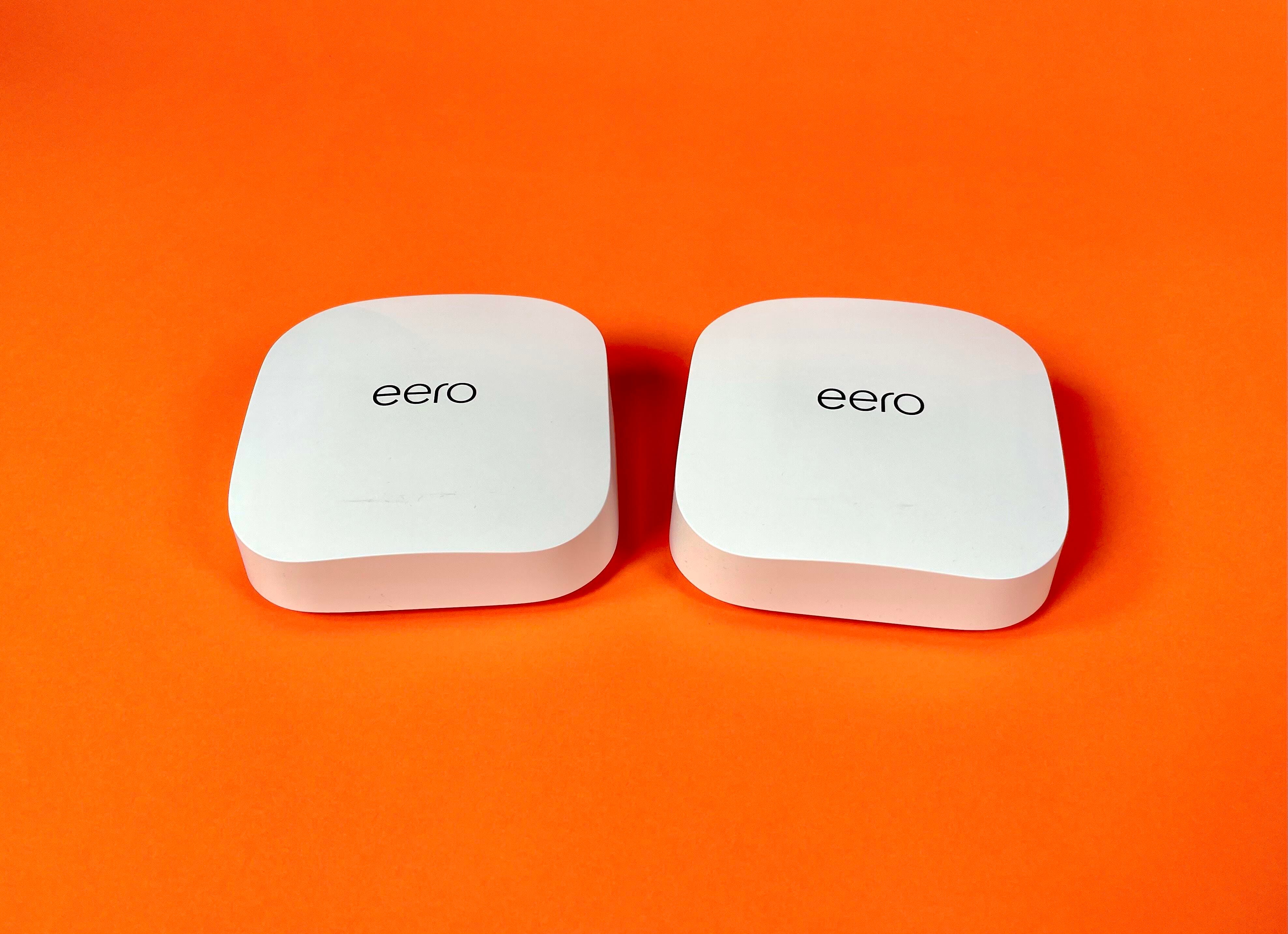
Eero Pro 6E
The first Eero system that supports Wi-Fi 6E
Speed rating: AX5400
Design: Triband (2.4, 5, and 6GHz)
Ports: Two Ethernet jacks (2.5Gbps and 1Gbps), USB-C power jack
Extras: Built-in Zigbee smart home radio, Matter support via Thread
Hardware: 1GHz dual-core processor, 1GB of RAM, 4GB of flash storage
Range: 6,000 sq. ft. (three-pack)
Individual price: $160
Three-pack price: $350
The Eero Pro 6E offers a step up from the Eero 6 Plus — and from every other Eero system that came before it — with the addition of Wi-Fi 6E support. That means that the tri-band AX5400 system comes equipped with a radio capable of sending signals in the 6GHz band, a sizable swath of airwaves with more than twice as much bandwidth as the 5GHz band and no over-the-air interference from previous-gen devices.
That positions the Eero Pro 6E to keep up with forward-looking use-cases like augmented reality that will require networks capable of moving large amounts of data all at once. On top of that, the Ethernet WAN port capable of accepting incoming wired speeds as fast as 2.5Gbps (2,500Mbps) means that it’s built to keep up with the new multigig internet plans that are growing in availability this year, too.
Performance was strong when I tested the system out at home. Only five of the 30 or so systems that I’ve tested there registered faster average download speeds than the Pro 6E; only four of them surpassed its average upload speeds. That makes it a worthy upgrade pick, but with wireless speeds that top out around 1.3Gbps, it isn’t quite the multigig mesh you might have hoped for.
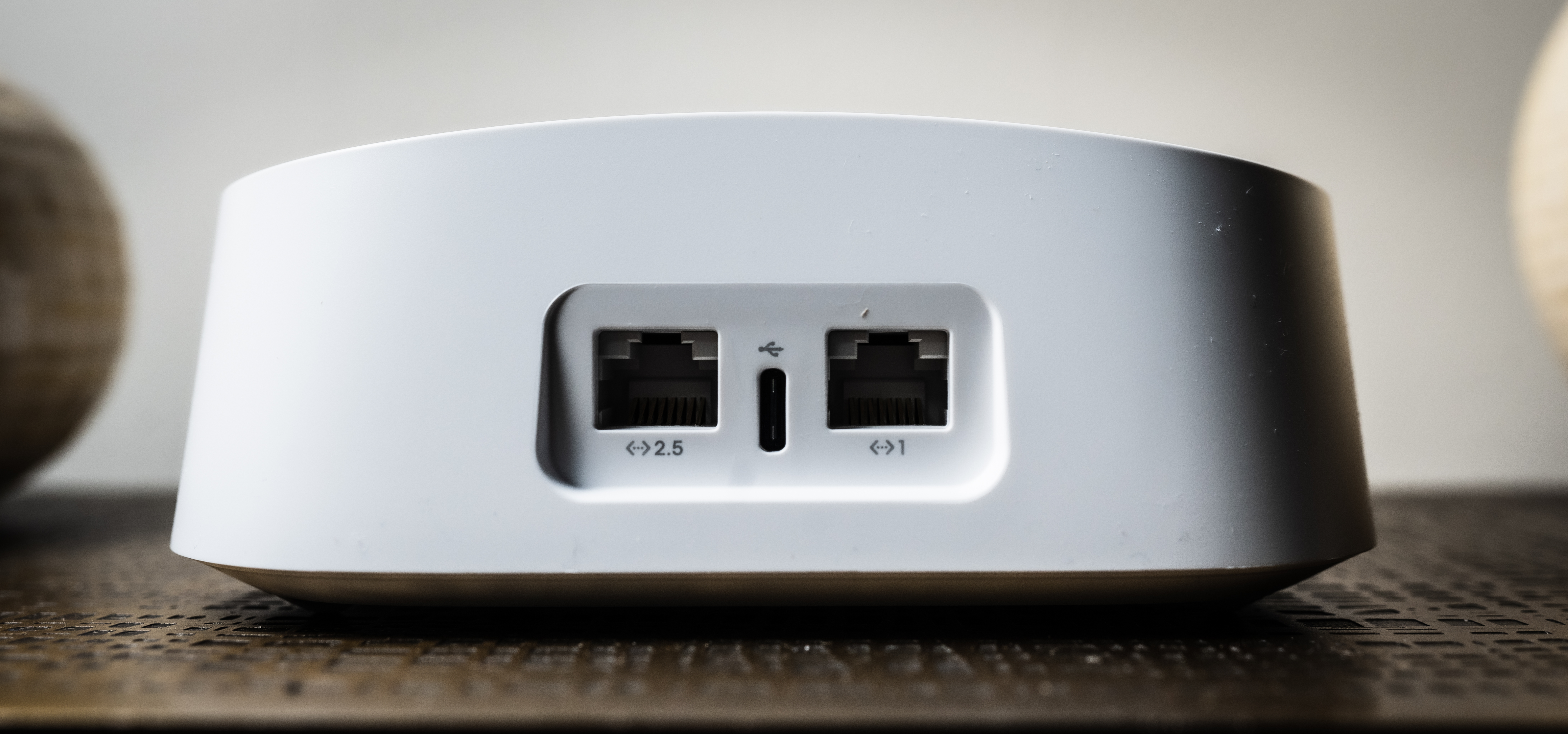
Design and specs
Neither of the new systems deviate from Eero’s established style: Glossy, white plastic with gentle curves, ports in the back and an Eero logo up top. In fact, they’re nearly indistinguishable from previous-gen Eero systems, and maybe that’s the point, as both the Eero 6 Plus and the Eero Pro 6E are backward compatible with earlier-gen Eero setups. That means that existing Eero users could pick up a single Eero 6 Plus or Pro 6E device and add it into their setup as either the main router or as an additional range extender.
As for the internals, the Eero Pro 6E is the more powerful of the two mesh routers, boasting faster radios, superior range and twice as much RAM as the Eero 6 Plus, plus the added benefit of the 2.5Gbps Ethernet jack in the back. Another key Pro advantage: The triband build, which allows the system to dedicate either the 5 or 6GHz band to system transmissions between the router and its satellites. All of that is great — but the problem is that the Eero Pro 6E isn’t designed to hit wireless speeds much faster than 1.3Gbps, so while it can handle an incoming multigig connection, it won’t offer those same blazing fast speeds that you’re presumably paying for when you’re connected over Wi-Fi.
That brings us back to the Eero 6 Plus, which offers significantly better performance than before, thanks to faster radios of its own, plus support for 160Mhz channels — wider lanes for your web traffic to pass through. It isn’t as powerful as the Pro 6E, but it makes better use of the horsepower packed inside, especially given that it costs $155 less for a three-pack than the Eero Pro 6E. Dollar for dollar, the hardware just makes a little more sense, so I give it the slight edge here.
Winner: Eero 6 Plus

Performance and speeds
Design choices aside, the Eero Pro 6E is the speedier of these two systems. In my home, where I have a fiber internet connection with upload and download speeds of up to 300Mbps and the fastest devices I test top out at around 375Mbps at close range, the Eero Pro 6E’s download speeds to a Wi-Fi 6 device came out to 342Mbps when averaged across the whole house. That rose to a very impressive 365Mbps when I repeated my tests with a Wi-Fi 6E device.
Meanwhile, the Eero 6 Plus returned average Wi-Fi 6 download speeds of 304Mbps, and that number actually went down slightly when I reran my tests with a Wi-Fi 6E device. That isn’t surprising — without Wi-Fi 6E support, the Eero 6 Plus won’t treat Wi-Fi 6E client devices any differently than those that support Wi-Fi 6.
A download average of 304Mbps is still a very good result in that test (and it’s still top-10 among all of the mesh routers I’ve tested at home over the past few years) — but the Eero Pro 6E was even better. What’s more, you’re likely to see an even greater difference between the two on a network that supports higher speeds than my 300Mbps fiber plan, because the Pro 6E is better equipped to handle faster speeds like those. The system will also improve with age as more and more of the devices in our homes start offering support for Wi-Fi 6E. That means the Eero Pro 6E gets the clear edge here.
Winner: Eero Pro 6E
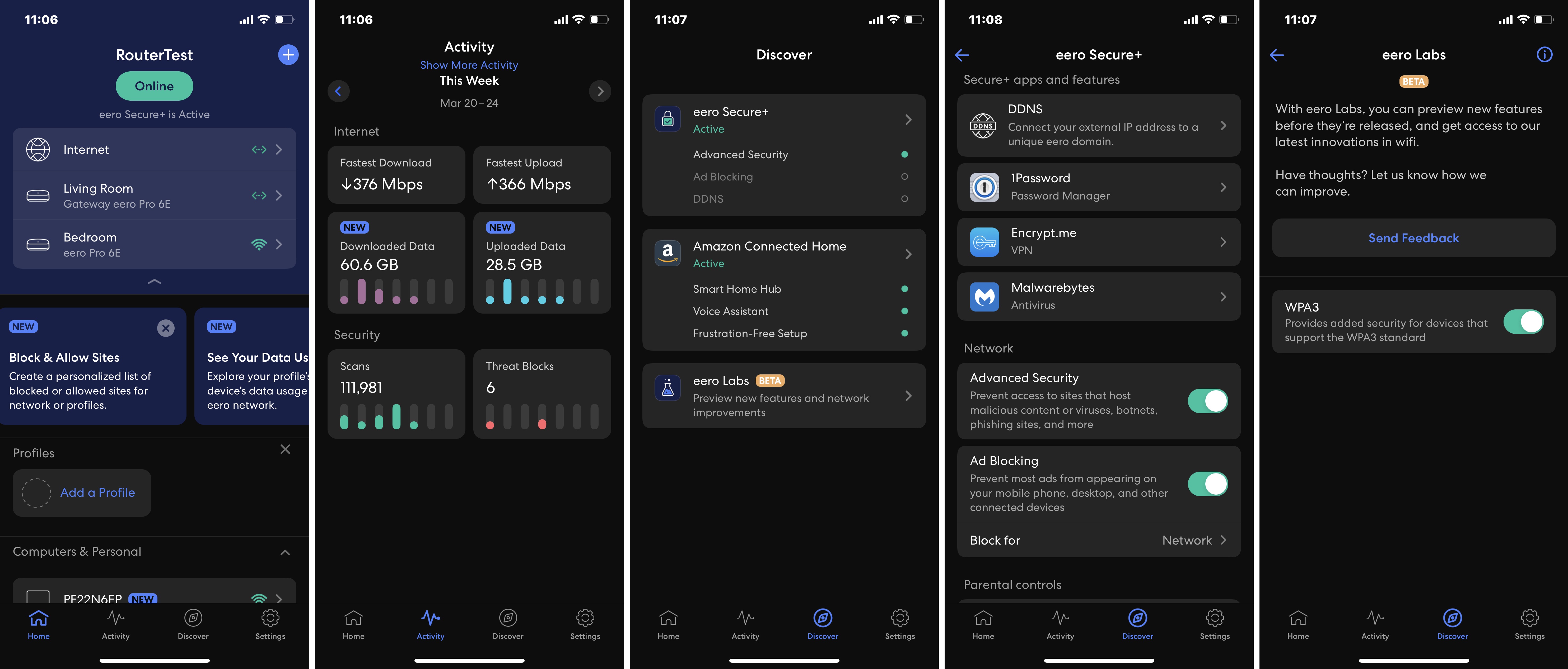
Privacy, security and features
Both the Eero 6 Plus and the Eero Pro 6E offer setup guidance and system controls via the Eero app, available on Android and iOS. The app does a very good job of walking users through the setup process, which is itself pretty simple — just connect an Eero device to your modem with an Ethernet cable, plug it into a power source, give your network a name, pick out a password and plug in the extenders when instructed. With both systems, I had things up and running in well under 10 minutes.
In addition to the setup help, the Eero app makes it easy to track the devices connected to your network, run a quick speed test, or group devices for ad blocking or parental control purposes. With a $3 monthly subscription to Eero Secure, you can add in additional security and content filtering features — make that a $10 monthly subscription to Eero Secure Plus to add in remote DDNS controls as well as access to Malwarebytes antiviral protection, the Encrypt.me VPN, and 1Password, which is one of CNET’s top-rated password managers. Security features aside, both Eero systems feature built-in Zigbee radios for connecting things like lights and locks to your home network, as well as support for the upcoming Matter smart home standard by way of Thread support. All of that — the setup help, the app features, the optional Eero Secure extras, the smart home radios — are the same across both the Eero 6 Plus and the Eero Pro 6E.
The two systems share the same privacy considerations, as well. On its data-collection support page, Eero says that it doesn’t ever track the websites you visit or collect the contents of your web traffic, but the company does collect data from your network in order to optimize Wi-Fi performance. Eero says that it doesn’t sell that customer data, or sell ads based on that data — but it doesn’t offer an option for users to opt out of data collection altogether, which sets it apart from some other manufacturers in the home networking space. Again, it’s the same consideration for both systems, so this one’s a push.
Winner: Tie
Value
If you’re picking between a three-piece mesh router that costs $195 and another that costs $350, you might assume that the $195 system is the superior value. You wouldn’t necessarily be wrong — but with the Eero 6 Plus and the Eero Pro 6E, it’s probably a lot closer than you think.
Let’s start with the 6 Plus. At $195, it is one of the cheaper mesh systems you’ll find. Other dual-band, three-piece mesh systems with support for Wi-Fi 6 got there first, including the Netgear Nighthawk MK63S, currently available for $198, the Asus ZenWifi AX Mini, which currently costs $229, and Amazon’s own Eero 6. That previous-gen system launched in 2020 for $279 ($20 less than the Eero 6 Plus), and Amazon just marked it down to $150. Then again, none of those systems performed nearly as well as the Eero 6 Plus did, which definitely gives it a strong claim to value in that $200-or-less category. There just aren’t a lot of three-piece systems in that price range with performance that’s as good as this.
That brings us to the Eero Pro 6E, which is much more of a pricing play than the 6 Plus. At $350, it’s expensive, but it’s a relative bargain compared to your other mesh options with support for Wi-Fi 6E. There aren’t many of those, but they come with eye-popping price tags — $575 for a Linksys Velop Atlas Max 6E three-pack, or $1,500 for a Netgear Orbi AXE11000 three-pack. The Eero Pro 6E might be expensive, but it’s a needle mover for Wi-Fi 6E’s cost of entry, and that’ll probably tempt a lot of shoppers who are itching to make the jump to 6E support on their home network.
It is early, though, and Wi-Fi 7 routers have already started to debut that can match or even beat the Pro 6E’s value proposition. If you’re buying right now, you can expect a noticeable uptick in system speeds, as well as slightly faster speeds to Wi-Fi 6E devices (assuming you have any). Is that worth an extra $155?
For some forward-looking households, I think that it might be, particularly if you’re looking to get the most out of a gigabit internet plan (which is really the Pro 6E’s sweet spot). That Pro 6E value will likely look better and better as Wi-Fi 6E continues to mature and make it into our phones, laptops and other household devices. But outside of that, I think the best value today lies with the 6 Plus.
Winner: Eero 6 Plus (but it’s a lot closer than you’d think)
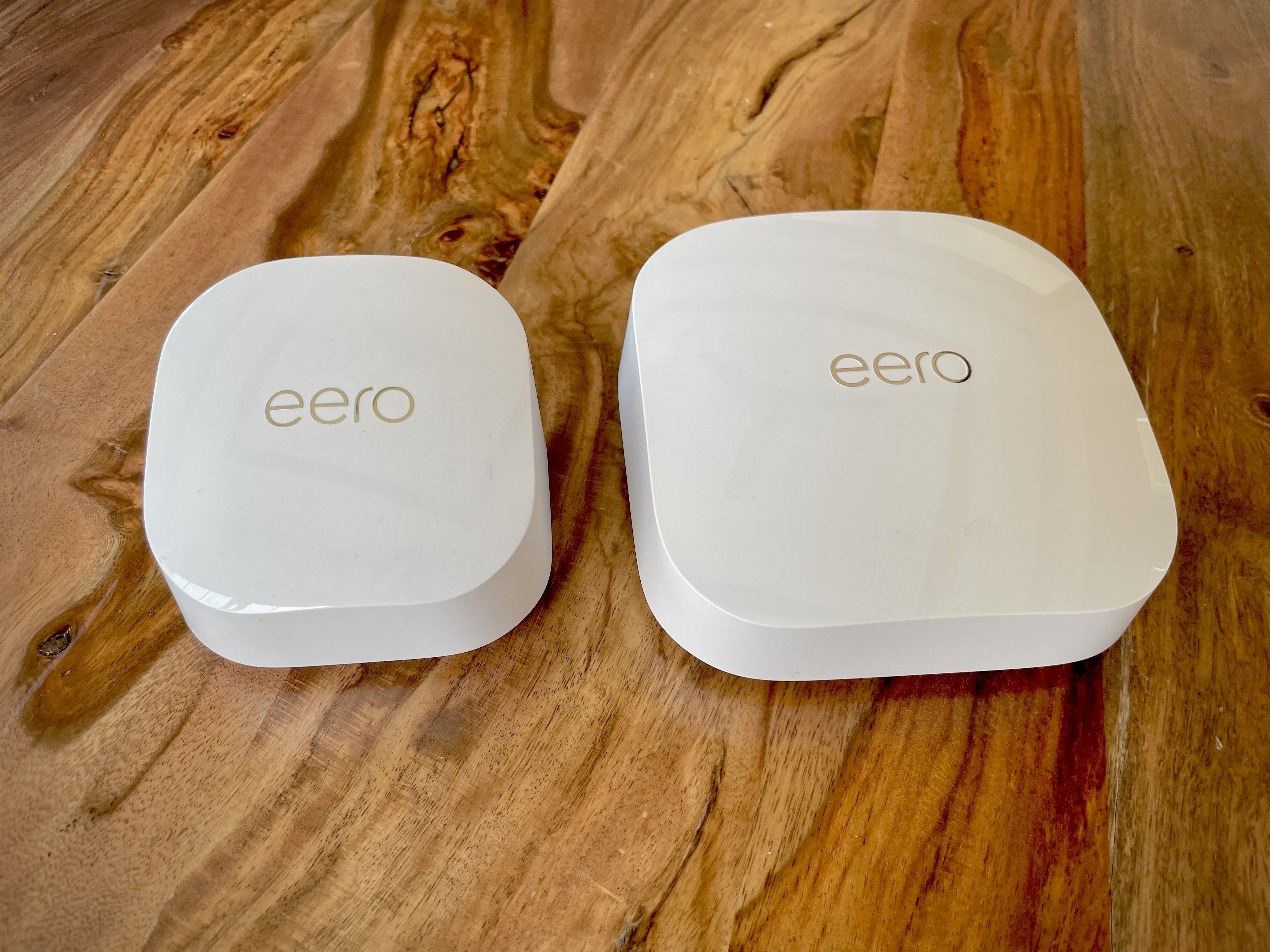
The verdict
The Eero 6 Plus and the Eero Pro 6E are both strong options in the mesh category, and I could easily see myself recommending either one of them to a friend or family member. Both offer fast, consistent speeds, strong ease of use, a good mix of features and decent value relative to the competition. I also appreciate Eero’s restraint beneath its new parent company — the routers support Frustration-Free Setup and Alexa voice controls for pausing the Wi-Fi, but that’s about as far as they go on the Amazon front. There are no Alexa speakers or long-distance Amazon Sidewalk radios built into either of them, and neither one requires you to link your Amazon account to your home network.
The Eero Pro 6E is the better pick for power users looking to get the most out of a gigabit connection, but for most of us, I think the Eero 6 Plus is the better buy. With full-width channels and faster radios than before, it makes much, much better use of Wi-Fi 6 than the last-gen Eero 6 did, and while it doesn’t support Wi-Fi 6E or multigig speeds, I think we’re still a few years away from the time when those will be must-haves in most peoples’ homes. The Pro 6E is a little ahead of its time, which isn’t a bad thing, but the Eero 6 Plus is the better pick for the price if you’re buying today.




